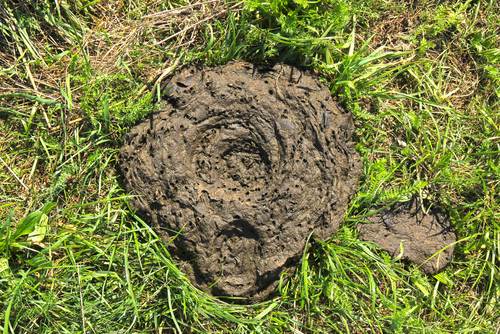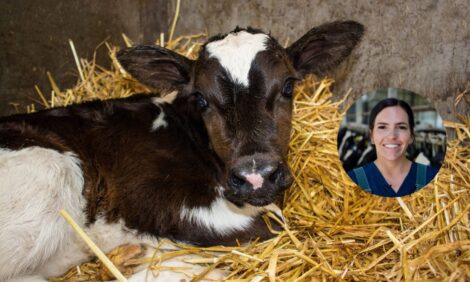



Got Manure? Need a Technology?
Manure management problems can arise in a multitude of forms although Dr Deanne Meyer, a Californian waste specialist says there are simple routes to a variety of different solution.Manure is a fact of life for those who produce milk. The more milk your cows produce, the more manure you’ll have to manage because cows aren’t perfect converters of feed, writes Dr Meyer, livestock waste management specialist at California, Davis.
In the area of manure technology there is always someone selling additives or treatment technology to help manage your manure problem. If you don’t know exactly what your manure problem is, any technology has the potential to solve it.
Only after you define your problem (physically or chemically) can you identify the appropriate treatment. To define your manure problem, ask yourself the following questions:
- Are you cow rich and land poor?
- Do you have sufficient acres to manage your manure to the specifications of your local and state water regulatory agencies?
- Is salt accumulating in the soil?
- Is nitrate or salt degradation of
- groundwater or nutrient enrichment of surface waters a local concern?
- Do your neighbors (or others) complain about your manure application activities?
- Are gaseous emissions from your facility a concern to citizens and/or a regulatory authority?
- Are people who cite manure as a reason to not have dairies in your backyard?
If you answer yes to any of these questions, then you are a potential candidate for a “manure technology.” Before hunting for a treatment technology, don’t overlook the potential impact of diet modification.
Where Do you Go to Find the Appropriate Manure Technology?
In the ideal situation there would be a central information clearinghouse for manure treatment technology, writes Dr Meyer.
The information would be from controlled research trials and would help determine the effectiveness of a particular technology for your problem.
*
"Before hunting for a treatment technology, don’t overlook the potential impact of diet modification."
Let’s say you generate more phosphorus (P) than you are able to manage on your land. You are looking at a separator to separate solids from liquids. To decide if this separator will help with your P problem, ancillary information is necessary.
It is important to know that most P in liquid dairy manure is in very fine particles and is not easily separated without additional input (chemicals to cause flocculation), and solids from traditional inclined screens do not account for very much of the P in the system.
With this ancillary information you can determine that this separator isn’t going to help with your P imbalance. Presently, there are two useful sources of information on manure technology and another in development. North Carolina State University tested 18 technologies.

Dr Meyer says that only after you define your problem (physically or chemically) can you identify the appropriate treatment.
Their two-year report can be found at: http://www.cals.ncsu.edu/waste_mgt/2yrreport.pdf.
It defines Environmentally Superior Technology (EST) as any technology, or combination of technologies that (1) is permittable by the appropriate governmental authority; (2) is determined to be technically, operationally, and economically feasible for an identified category or categories of farms; and (3) meets the following performance standards:
- Eliminate the discharge of animal waste to surface waters and groundwater through direct discharge, seepage, or runoff.
- Substantially eliminate atmospheric emissions of ammonia.
- Substantially eliminate the emission of odor that is detectable beyond the boundaries of the parcel or tract of land on which the farm is located.
- Substantially eliminate the release of disease-transmitting vectors and airborne pathogens.
- Substantially eliminate nutrient and heavy metal contamination of soil and groundwater.
The second source is a Canadian effort to make manure technology effectiveness easier for the layperson to understand. The Environmental Technology Verification (ETV) programme was founded in 1997 by Environment Canada and Industry Canada.
The Ontario Centre operates the program for Environmental Technology Advancement. The certification process gives recognition by the Government of Canada that claimed performance of the technology has been assessed and confirmed using a rigorous procedure to validate the truth of the performance statement.
There is a Manure Management Technology Performance Verification component to this program. A list
of program graduates is on their website: http://www.etvcanada.com/English/e_progGrad.htm.
The advantage of this programme is that individuals have a place to check and see if a technology actually meets its sales claims. The disadvantage is, parameters other than those identified in the claims are not discussed.
For example, if a technology has a claim to reduce methane, but this is accomplished along with a huge increase in ammonia emissions, the technology still graduates from the programme. The large ammonia emissions information is not necessarily available to the consumer.
The California Air Resources Board has recently convened a Dairy Manure Technology Feasibility Assessment Panel whose purpose is to review technologies likely to improve management and treatment of dairy manure in the San Joaquin Valley.
Its goal is to produce a report that lists and describes these technologies; assesses the environmental and economic performance of each; and makes recommendations about which types of technologies may hold the most promise for improving dairy manure management and treatment in the San Joaquin Valley.
Panel members include representatives from federal, state and local government, industry, environmentalists, conservationists, and academia. The Panel is not funding research to validate claims
or analyze technologies but will simply evaluate available data. Findings should be available in summer 2005 through the California Air Resources Control Board.
Contact the local distributors you know and encourage them to provide information to the group for evaluation.


